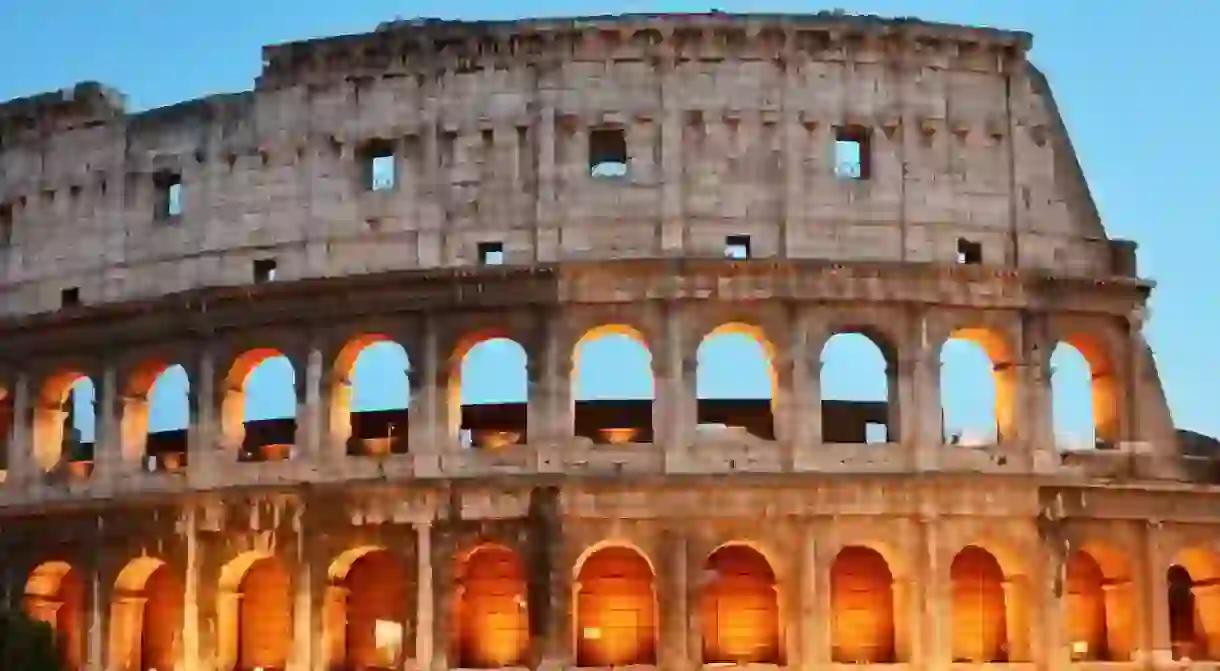A History Of The Colosseum in One Minute

Rome’s most famous landmark is an awe-inspiring monument for its immense scale, lurid past and ability to withstand the test of time. Originally known as the Flavian Amphitheater, the Colosseum is nearly 2,000 years old and remains the largest amphitheater ever built. Let’s take a look at its intriguing history and the notable spectacles that were carried out within its premises.
The Colosseum was constructed over a short decade, between 70-80 AD, by up to 100,000 slaves. Its building was overseen by three different emperors who ruled under the Imperial Flavian dynasty, lending the structure its original name. Emperor Vespasian began the construction of the Flavian Amphitheater and his son Titus oversaw the construction of an additional tier after his death in 79 AD. His youngest son Domitian constructed the underground tunnels and added an extra level to increase its seating capacity. The amphitheater takes its more commonly attributed name from the Colossus of Nero, an enormous bronze statue of the Emperor which was located beside the structure (and in the vicinity of his famed villa complex, the Domus Aurea).

The Colosseum was a recreational and gathering space that was used for gladiatorial contests, public spectacles, historical re-enactments, mythological theatrical performances and of course, executions. It could hold between 50,000 to 80,000 spectators and the seating arrangements reflect the stratification of Roman society: senators were seated closest to the stage while the poorest Roman citizens (and women) stood at the highest level. Its skilled architects developed an ingenious design which included 80 entrances and exits with a numbering system to allow access in and out of the structure. Unlike most ancient amphitheaters which were built into hillsides for support, the Colosseum is so impressive because it is a freestanding structure: it is made of travertine stone that was sourced from the nearby Tivoli area and held together with iron clamps.

The Colosseum is most closely associated with its gladiatorial shows, although often the combatants were not skilled professionals but rather unlucky slaves and criminals pitted against each other for the enjoyment of the public. In fact the venatio, or animal hunt, was one of the most popular shows for its novelty and shock appeal. Always in pursuit of ostentatious displays of wealth and power, the Romans procured exotic animals such as elephants, giraffes, lions, bears and crocodiles from the far reaches of the empire and sent them out into the pit, often along with unfortunate souls who would be torn to pieces. During the inaugural games of the Colosseum, most likely held in 80 AD, over 9,000 animals are believed to have been killed. The Romans also constructed elaborate stage sets on the arena floor, simulating forests and other natural environments, as backdrops to the events taking place.

Today the Colosseum is considered to be one of the New7Wonders of the World and attracts nearly 4 million visitors each year. It is currently undergoing major restoration works funded by luxury Italian shoe company Tod’s.













